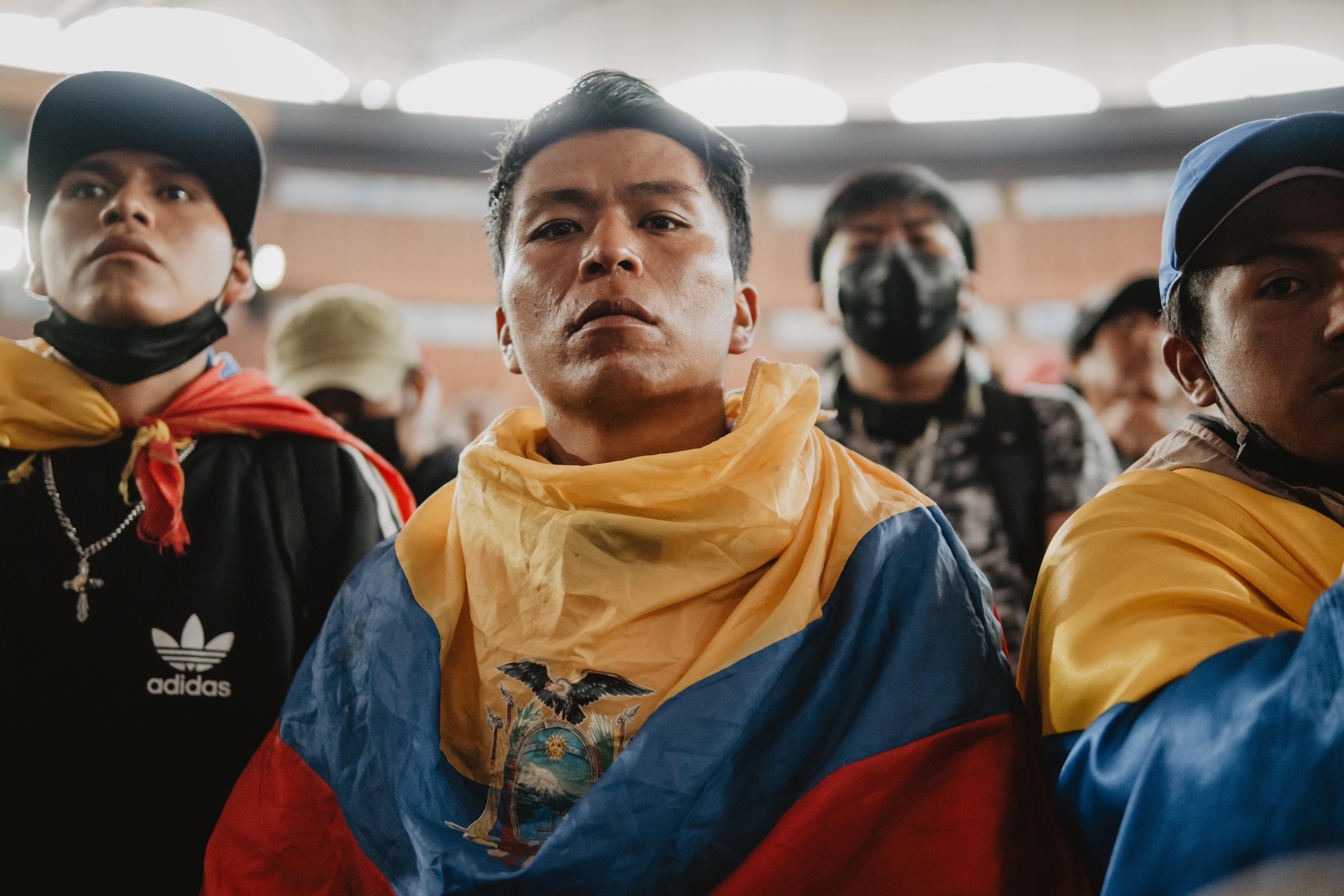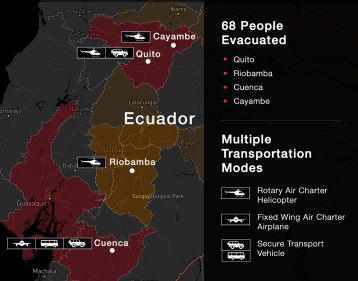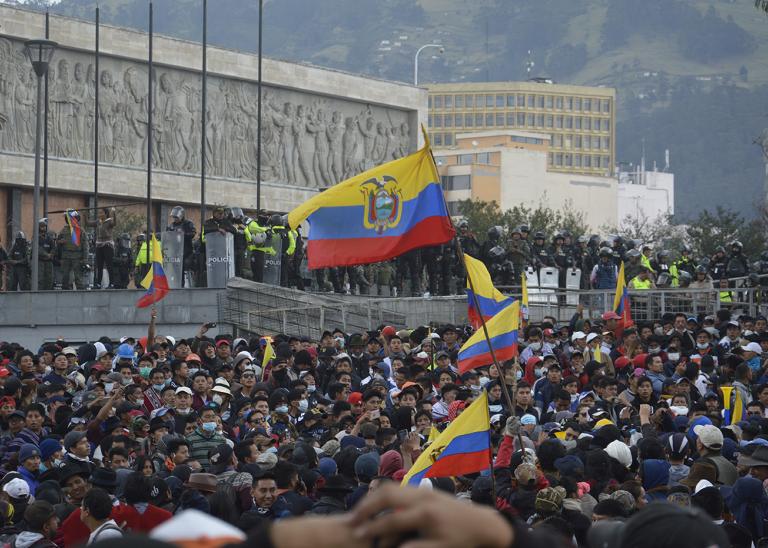Case Study — People Risk 2022
Escalating Violence in Ecuador Prompts Need for Emergency Assistance

A global response team backed by real-time intelligence alerts provides the urgent aid needed during civil unrest.
Situational Analysis
On June 13, 2022, Ecuador’s largest indigenous rights organization launched a national strike in response to the government’s economic policies. The situation rapidly deteriorated when other social and environmental organizations quickly aligned with the movement. A few days later, the government declared a 30-day State of Exception due to increasing civil unrest in the provinces of Cotopaxi, Imbabura, and Pichincha, home to Quito, the country’s capital; however, in many areas, protesters defied the State of Exception and the curfew creating clashes with police and security forces.
Over the next two weeks, protests expanded to 22 provinces. The conflicts resulted in public and private property damage, 280 civilian injuries, five deaths; eight missing people; 158 arrests; 100 police officer injuries, and 25 military personnel injuries.
Situation Report
How it Began – Calls for Assistance
Several Crisis24 university clients had students and faculty on research assignments, and a prominent NGO had outreach staff at various locations in and around Quito, Ecuador. As our clients received intel alerts regarding the deteriorating security in Quito, calls for emergency assistance started flooding into our global operations center, prompting Crisis24 personnel to spring into action. Over ten days, Crisis24 teams worked on fielding calls for assistance, coordinating with insurers, creating operations plans, facilitating tandem support, and conducting safe evacuations for 68 client personnel from locations in Quito, Riobamba, Cuenca, and Cayambe through a mix of secure transport, fixed wing, and rotary air charter.

Crisis24 Hotline in Action
- Inbound call from client(s) requesting assistance
- Response team answers call with client-specific protocols and completes triage questionnaire
- Response team determines appropriate incident response protocols based on clients’ documented processes
- Engage with clients' emergency contacts to initiate incident protocol
- Work with additional parties to secure incident response requirements
- Stand up an incident response team
- Send call report via email per clients’ protocols
Conditions Deteriorate
The government imposed restrictions on movement, closing all main roads in the Quito area in the days following the strike. Crisis24 determined that a ground move into Quito was not considered safe, as protesters were deemed highly aggressive. Protestors burned tires and created physical blockades on several major routes, including routes to the airport. The potential for being stranded in rural areas was increasing.
With the fear of provisions running out and difficulty leaving the country due to roadblocks and flight cancellations, concern over employee safety increased with each passing day. Police began using tear gas and water cannons to disperse violent crowds and looters. The government deployed additional security forces to Quito, including contingents from the Ecuadorian Army, further contributing to unsafe travel.
Help is on the Way
Crisis24’s protective solutions and incident response teams quickly created and implemented an action plan to provide the intervention required. The team immediately mobilized the assistance of our partners in the area,
working with on-the-ground security to evaluate conditions and coordinate the efforts required to evacuate client personnel safely. Our incident response teams also worked with our client’s insurance providers to establish regular communications with impacted personnel, carrying out daily welfare checks and situation updates to all critical stakeholders until task completion. Additionally, the teams provided logistical assistance in everything from preparing travel documents to car rental returns.
Crisis24 in Action
Ground Moves
Ground moves required careful consideration due to the continually changing conditions throughout the area.
The Crisis24 team continuously monitored the routes and conducted intelligence assessments of the volatility of the environment to ensure safe passage. Crisis24 securely transported several impacted personnel from their residences to the airport in Quito using 4x4 SUVs and pickup trucks. Advance vehicles conducted route reconnaissance to ensure routes were clear from blockade and protest activity.
Another 47 personnel could not travel the 125 miles safely to make their exit flights to the US. Crisis24’s emergency and response team completed a secure relocation move within 10 hours, carefully coordinating the ground transportation from their hotel to the airport in Cuenca via two 30-seat buses. One support vehicle accompanied the buses, and a lead vehicle cleared the route and led the convoy, communicating potential threats and required route changes to the convoy commander. Crisis24 also supplied a fixed-wing aircraft to transport the passengers from Cuenca to Guayaquil International airport for their trip home to the US.
Air Moves
Helicopter evacuations require detailed planning and precise execution. To facilitate the safe passage of university personnel from multiple locations, Crisis24’s team conducted five helicopter sorties to the airport in Quito, including three from the base of an inactive volcano near Cayambe at an altitude of nearly 12,000 feet, 40 miles northeast of the airport. Considering weather conditions and land suitability, Crisis 24’s staff identified favorable helicopter landing sites in private pastures and acquired permission from the landowners. The team coordinated logistics for each sortie, evaluating the weight of passengers and luggage, flight duration, and refueling requirements.
Our team sent a helicopter safety video ahead of departure to prepare the passengers for transport. A security coordinator flew out on the first sortie lift and waited on the ground with the passengers returning with the team on the second lift. Once in Quito, a security detail accompanied the passengers via a secure vehicle until they were safely in the main airport building.
A separate Crisis24 team simultaneously coordinated two other helicopter sorties to Quito from Riobamba, a city 120 miles south of the airport. Within 24 hours of notification, the passenger count increased from four to eight, and the pick-up times changed due to weather conditions. The Crisis24 team continually communicated with the impacted personnel as all changes occurred.
Crisis Response Capabilities
In a crisis, the ability to move swiftly is vital. Crisis24 has one of the largest crisis intervention teams in the industry – a global network of response experts from a variety of backgrounds, including military and law enforcement, available 24/7 at a moment’s notice. When every second counts, our network of vetted professionals provides Crisis24 with the ability to respond swiftly, reduce costs, and deploy a team with the right skill sets and armed with the latest situational intelligence to get the job done.
A Successful Outcome
From the time the first phone calls came into our global operations center, Crisis24’s priority was the safety and security of client personnel. Comprehensive risk assessment, detailed planning, swift action, and continual two-way communication between our clients and the boots-on-the-ground enabled the safe evacuation of 68 client personnel over ten days.



